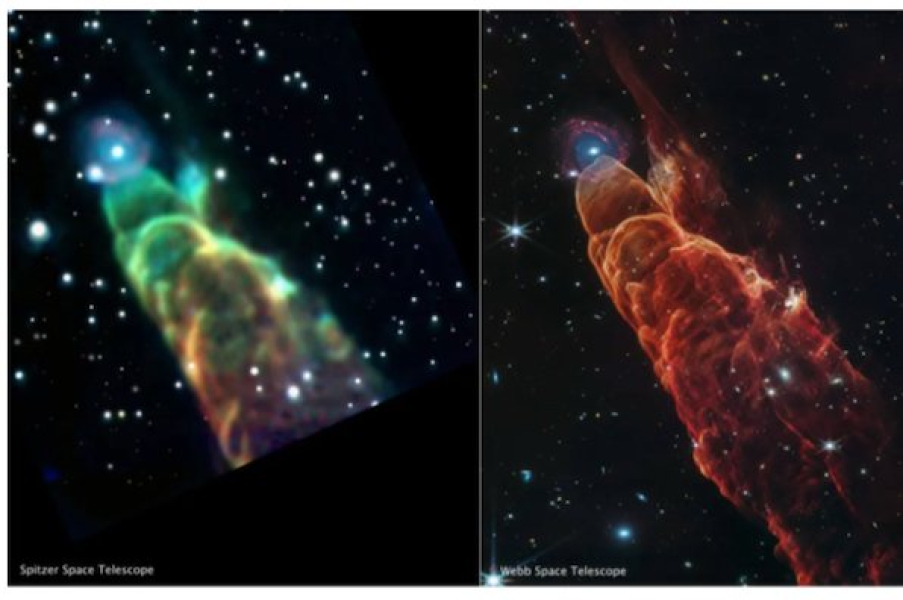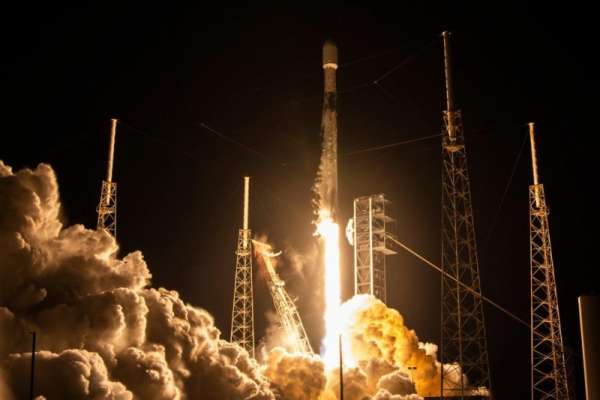
NASA's James Webb Space Telescope has captured a stunning celestial phenomenon: a spiral galaxy interacting with a stream of dust and gas from a newly formed star.
A NASA press release said it was a “fortunate coincidence” of two independent objects.
During the process of star formation, new stars often emit powerful jets, leaving impressive traces in space. In this stunning image, the jet of a young star sits next to a perfectly aligned distant spiral galaxy.
Herbig-Haro 49/50 is located approximately 630 light-years from Earth in the constellation Chamaeleon. When NASA's decommissioned Spitzer Space Telescope first spotted Herbig-Haro 49/50 (HH 49/50) in 2006, scientists dubbed it the “Cosmic Tornado” due to its spiral-like structure. However, the nature of the blurriness at the edge of the “tornado” remained unclear.
NASA recently pointed the Webb telescope at HH 49/50, and with improved imaging resolution, Webb was able to resolve fine details in the star's jet and determine that the fuzzy object is a distant spiral galaxy.
 |
| This side-by-side comparison shows an image of HH 49/50 taken by the Spitzer Space Telescope (left) and an image of the same object taken by the NIRCam and MIRI instruments taken by the Webb telescope. The Webb image shows intricate details of the heated gas and dust as the protostellar jet slams into the material. Webb also resolves a “fuzzy” object located at the tip of the outflow into a distant spiral galaxy. (Image credit: NASA, ESA, CSA, STScI, NASA-JPL, SSC) |
NASA described the resulting image as an “extraordinary cosmic coincidence” and one of the most remarkable images ever captured by JWST.
Sourse: www.upi.com





